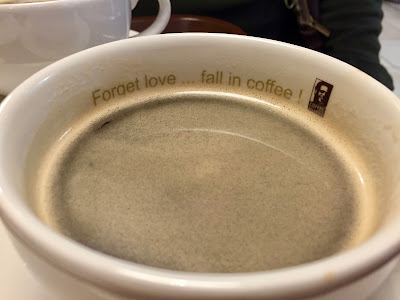First, the buses took us high above the city where we could look down on the vineyards stretching down the steep slopes and get a birds-eye view of the town.
 |
| We leave Viking Odin for our morning tour |
 |
| Vineyards stretched down the hillside |
Long a wine growing region, we caught sight of the city's long history in a statue outside of one of the local restaurants:
 |
| Transporting casks of wine |
The first stop was the Basilica of Constantine, originally the throne room of Emperor Constantine, begun in the 4th Century.
But right around the corner from this enormous Roman structure was the VERY Baroque palace of the Bishop-Elector of Trier, build in the middle of the 18th century. We would discover that Bishops (and in particular, the Bishop of Trier) wielded great power throughout Germany. Not content with simply leading the Catholic Church, they were able to gain civil power as Prince-Bishops. The Bishop of Trier controlled territory throughout many of the towns we would visit on our tour.
On the other side of Constantine's throne room stand two huge churches: The Cathedral of St. Peter, the oldest bishop's church in Germany dating back to the 4th century, and the Church of Our Lady (Liebfrauenkirche), the oldest Gothic church in Germany (from the 13th century). The Cathedral claims to have a portion of a robe worn by Jesus prior to the crucifixion in its collections.
We would also learn a hard truth about many of the structures we'd see on this trip: most have been extensively rebuilt over the years. The Church of Our Lady had been destroyed by bombing during World War II, so while portions of the structure are original, the interior also has a more modern feel, having been rebuilt during the middle of the 20th century.
These four structures: The Roman throne room, the Prince-Bishop's palace, and the two churches form the center of the town, but the market area extends beyond and leads to the Porta Nigra (Latin for Black Gate), the largest Roman gate still standing in Germany.
Our walking tour concluded here, and we had some time to explore Trier's Christmas market. On the way, our guide had also pointed out the house where Karl Marx had grown up, just off the main market area.
With ultimate irony, the ground floor is now the German equivalent of a "Dollar Store" selling cheap souvenirs and gifts. What would Marx think of that?
We'll cruise up the Moselle this afternoon and dock in Bernkastel-Kues for the evening.
















































